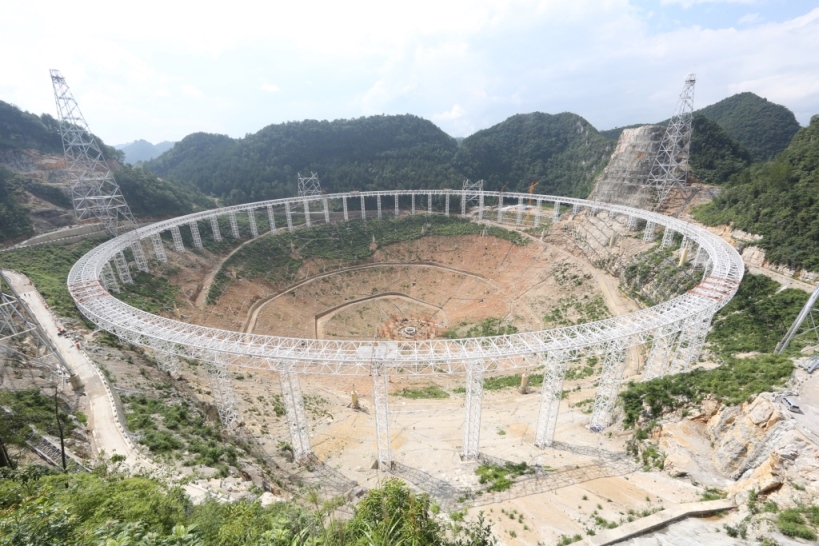Five-hundred-meter Aperture Spherical radio Telescope (FAST)
FAST aspires to supersede the current world-leading single-dish telescope, Arecibo, with three innovations/advantages:
1) An active surface with more than 4450 adjustable panels to realize pointing and tracking as the world’s largest steerable antenna under 3 GHz;
2) A light-weight cabin driven by 6 cables and servo-motors under closed-loop control up to a precision range of 5 decades;
3) A site of deep Karst depression situated in mountains, which helps shield radio frequency interference (RFI).
The main observables of FAST are pulsars, the 21cm atomic hydrogen hyperfine transition, molecular transitions including masers, and radio continuum. Its unparalleled sensitivity and excellent survey speed should allow astronomers to vastly expand the total volume of knowledge of compact objects, gaseous galaxies, and interstellar medium. The potential discoveries of FAST include thousands of new pulsars, the first pulsar in a spiral galaxy beyond Milky Way, hundreds of thousands of new HI galaxies, dark galaxies that make up part of the so-called missing baryons, the most distant OH mega-masers, new component of the molecular universe, and many more.



